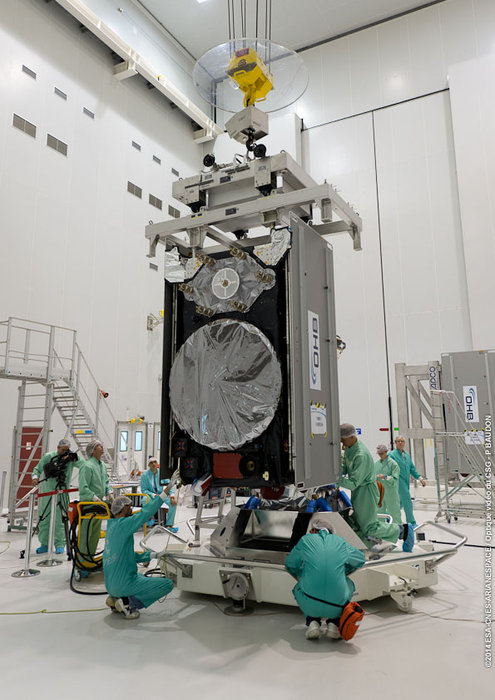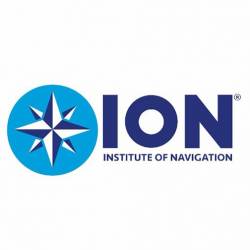 Installation of Galileo FOC satellite “Doresa” on the payload dispenser system. The first of two Galileo navigation satellites has been integrated on its payload dispenser system at Europe’s Spaceport in Kourou, French Guiana. The second satellite “Milena” was then installed in a side-by-side arrangement and will be mated atop a Soyuz Fregat upper stage. ESA/CNES/Arianespace/Optique Vidéo du CSG photo by P. Baudon
Installation of Galileo FOC satellite “Doresa” on the payload dispenser system. The first of two Galileo navigation satellites has been integrated on its payload dispenser system at Europe’s Spaceport in Kourou, French Guiana. The second satellite “Milena” was then installed in a side-by-side arrangement and will be mated atop a Soyuz Fregat upper stage. ESA/CNES/Arianespace/Optique Vidéo du CSG photo by P. BaudonThe European Commission (EC) has opened a public consultation on a newly revised version of the Galileo Open Service Signal in Space Interface Control Document (OS SIS ICD).
The consultation will take place through September 22, overlapping the scheduled first launch of fully operational capability (FOC) Galileo satellites on August 21. Details of the consultation process can be found on the EC Directorate-General for Enterprise website.
The European Commission (EC) has opened a public consultation on a newly revised version of the Galileo Open Service Signal in Space Interface Control Document (OS SIS ICD).
The consultation will take place through September 22, overlapping the scheduled first launch of fully operational capability (FOC) Galileo satellites on August 21. Details of the consultation process can be found on the EC Directorate-General for Enterprise website.
The commission published a new draft version of the document (Galileo OS SIS ICD, issue 1, revision 2) on June 30.
The ICD is intended for use by the Galileo Open Service user community and specifies the interface between the Galileo Space Segment and the Galileo User Segment. An initial version of the document appeared in February 2010 and updated as revision 1 in September 2010. A draft version first appeared in 2006.
EC officials said that they decided to launch an open public consultation process “in order to improve and consolidate the current draft document and to ensure that any further development of the Galileo OS SIS ICD takes into account the views of GNSS key stakeholders.”
The public consultation process provides stakeholders with an opportunity “to improve the quality and clarity of the document and to suggest new elements to be included in future versions, e.g. inclusion of multi-GNSS products and services.”
Galileo FOC Satellites on Launch Pad
According to the European Space Agency (ESA), Galileo satellites 5-6 are scheduled to lift off at 12:31 GMT (14:31 CEST, and 09:31 a.m. local time) from Europe’s Spaceport in Kourou, French Guiana on 21 August 21 on top of a Soyuz rocket. They are expected to become operational, after initial in-orbit testing, in autumn.
The two satellites will join the four Galileo ‘in-orbit validation’ satellites already in space. Launched in pairs in October 2011 and October 2012, these four satellites – the minimum required to obtain a position fix – served to demonstrate and validate the space and ground segments of the system.
Galileo SATs 7-8 are scheduled to follow end of year 2014. Then the constellation will be gradually deployed with six to eight satellites launched per year using a series of Soyuz and Ariane launches from Kourou, along with remaining elements of the ground network.
Following launch and separation from their upper stage, the “Launch and Early Operations” or LEOP phase begins, overseen from ESA’s Space Operations Center in Darmstadt, Germany.
If all goes well, LEOP should take about a week before control of the satellites can be handed over to the Galileo Control Center in Oberpfaffenhofen, Germany, and ESA’s Redu centre in Belgium, for detailed payload testing.



